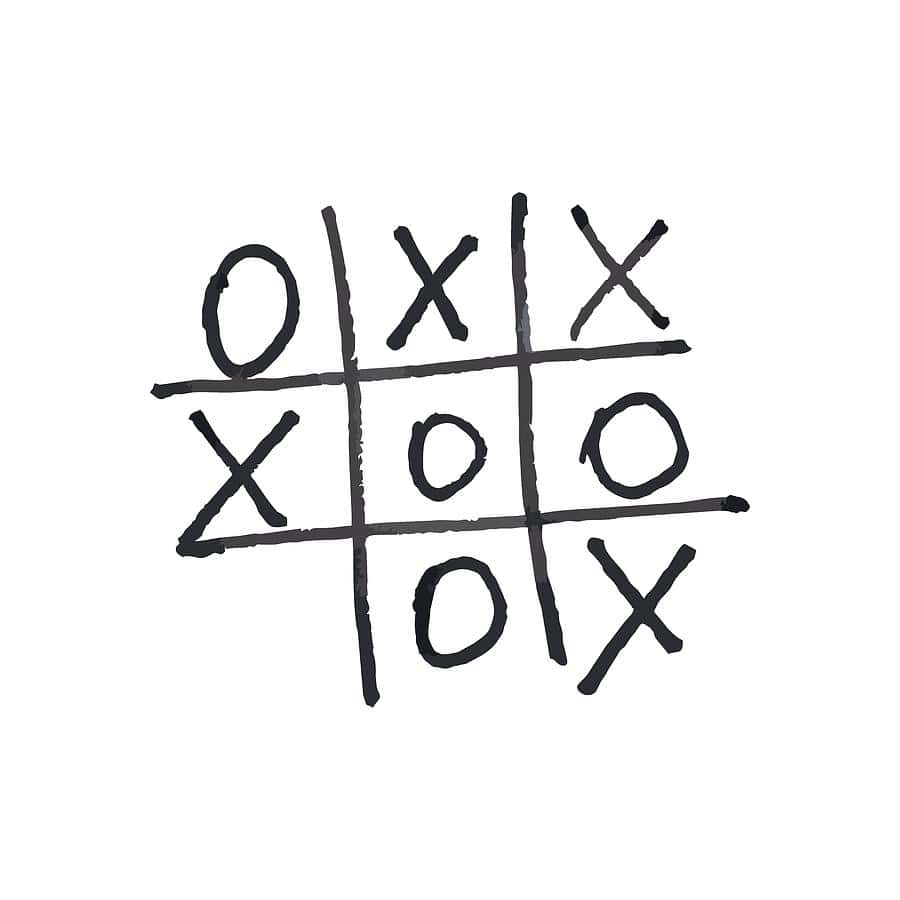An Ultimate Guide to Noughts and Crosses: Fun Strategies for Parents and Kids
Hey there, super parents! Are you looking for a simple yet exceptionally fun game to enhance family nights and boost your child’s strategic thinking? Well, you’ve hit the jackpot with the classic game of Noughts and Crosses, aka Tic Tac Toe! ?
Not only is it a great way to pass the time, but it’s also an excellent tool for teaching youngsters about strategy, turn-taking, and good sportsmanship. Plus, it requires nothing more than paper, pencil, and a playful spirit to get started. So, let’s dive right into the X’s and O’s of this beloved game!
What is Noughts and Crosses?
Noughts and Crosses, known to some as Tic Tac Toe, is an age-old pencil and paper game for two players who take turns marking the spaces in a 3×3 grid with their chosen symbol: either a nought (O) or a cross (X). The player who succeeds in placing three of their marks in a horizontal, vertical, or diagonal row wins the game. It’s as simple as it sounds, but don’t be fooled—there’s more to this game than meets the eye!
The Origins of Noughts and Crosses
Did you know that Noughts and Crosses is not just child’s play? It has a history that can be traced back to the ancient Roman Empire! Originating from the game ‘Terni Lapilli’, it has evolved through the ages – captivating hearts with its simplicity and timeless appeal. ??
Setting Up the Game
- Draw the Grid: Start by drawing a square divided into 9 smaller squares, resulting in a 3×3 grid. No fancy equipment needed; just your handy-dandy notebook and a pen or pencil will do the trick!
- Select Your Symbols: Each player chooses a symbol: one will be ‘O’ (nought), and the other will be ‘X’ (cross). Variety is the spice of life, so feel free to get creative with your symbols!
- Determine Who Goes First: Play rock-paper-scissors or flip a coin if you want to add a twist of fate to kick off the game. The winner can decide whether to be noughts or crosses!
Rules of Play
Now that you’re all set, let the games begin! Players take turns putting their marks in the empty squares. The first player to get 3 of their marks in a row (up, down, across, or diagonally) is the winner. If all 9 squares are filled and neither player has 3 marks in a row, the game is considered a draw. Let’s keep it lively and friendly – make sure to encourage your kiddo, celebrate their victories, and learn from each outcome together!
Benefits of Playing Noughts and Crosses
Entertainment aside, Noughts and Crosses offers a treasure trove of educational benefits, especially for young minds! It enhances cognitive skills, promotes strategic thinking, and perfects their understanding of cause and effect. Moreover, it’s a fantastic way to introduce the concept of fair play and handling competition with grace. It’s a win-win for everyone!
Alright, wonderful parents! You’ve now got the lowdown on the timeless game of Noughts and Crosses. Don’t forget to stay tuned as we delve deeper into some clever strategies that will churn those little neural networks and make you the undefeatable champion of the family board… Or at least, until the little ones catch on. ?

Five Things Parents Should Know When Preparing for Noughts and Crosses
1. The Right Age to Introduce the Game
There’s no exact science to determining the perfect age to introduce your child to Noughts and Crosses, but children typically grasp the concept around the age of five. It’s a wonderful opportunity to practice counting and recognizing patterns for the preschoolers. Make sure it’s a fun learning experience rather than a competitive pressure-cooker.
2. Customizing the Game for Learning
Personalize the game to make it more educational. You can replace the traditional ‘X’ and ‘O’ with numbers for a math twist, or use different colors to also make it a lesson in color recognition. The versatility of Noughts and Crosses allows it to be a multifaceted educational tool.
3. Reinforcing Strategic Thinking
As simple as the game may appear, it can serve as an excellent introduction to the concept of strategy. Teach your child to think a couple of moves ahead and consider the consequences of each action. Encouraging them to anticipate their opponent’s moves will help sharpen their strategic thought process.
4. Emphasizing Sportsmanship
Noughts and Crosses can be a great way to teach your child about winning gracefully and coping with losses. Encourage them to shake hands (even if it’s with mom or dad) and say “good game” regardless of the outcome. Instilling these values early on goes a long way in their social development.
5. Creating Variations to Keep It Fresh
After your child has mastered the traditional 3×3 grid game, challenge them with larger grids like 4×4 or 5×5 squares. This not only keeps the game interesting but also introduces new levels of complexity that can foster further cognitive growth and strategic planning.
Strategies for Noughts and Crosses
While many may think Noughts and Crosses often ends in a draw, there are strategies that can increase the odds of winning, for both you and your kiddos!
Take the Corners
Occupying the corner squares gives players more opportunities to create a line of three. It’s a powerful move that can quickly lead to a win if your opponent is not careful.
Block your Opponent
If you see that your opponent is one move away from winning, your next move should be to block them. This helps prolong the game and sometimes even turn the tide to your favor.
Force a Win-Win Situation
Create two opportunities to win (also known as a ‘fork’) on the next turn. This can happen when you have two non-opposing lines that both have a chance of completing a row, column, or diagonal, essentially securing your victory.
Advanced Grid Play
For the masterful players, choosing a 5×5 grid can introduce new winning conditions, such as needing four in a row to win. This variation requires deeper strategic thinking and planning and will make a Noughts and Crosses champion out of your family’s playful prodigy!
Fun Beyond the Grid
Beyond the cerebral calisthenics, Noughts and Crosses is about creating memories and laughter. It’s a bonding experience that translates symbols and grid lines into connections and shared joy. It nurtures patience, critical thinking, and the delight of shared activity. Remember, the true victory in a game like Noughts and Crosses is the smiles and the bonding time spent together.
With a piece of paper and a dollop of enthusiasm, you’re ready to embark on a journey of joyous learning and delightful competition. Grab your pens, dear parents, and may the best strategist win—until the next round of family fun with Noughts and Crosses!
See more great Things to Do with Kids in New Zealand here. For more information see here
Disclaimer
The articles available via our website provide general information only and we strongly urge readers to exercise caution and conduct their own thorough research and fact-checking. The information presented should not be taken as absolute truth, and, to the maximum extent permitted by law, we will not be held liable for any inaccuracies or errors in the content. It is essential for individuals to independently verify and validate the information before making any decisions or taking any actions based on the articles.




